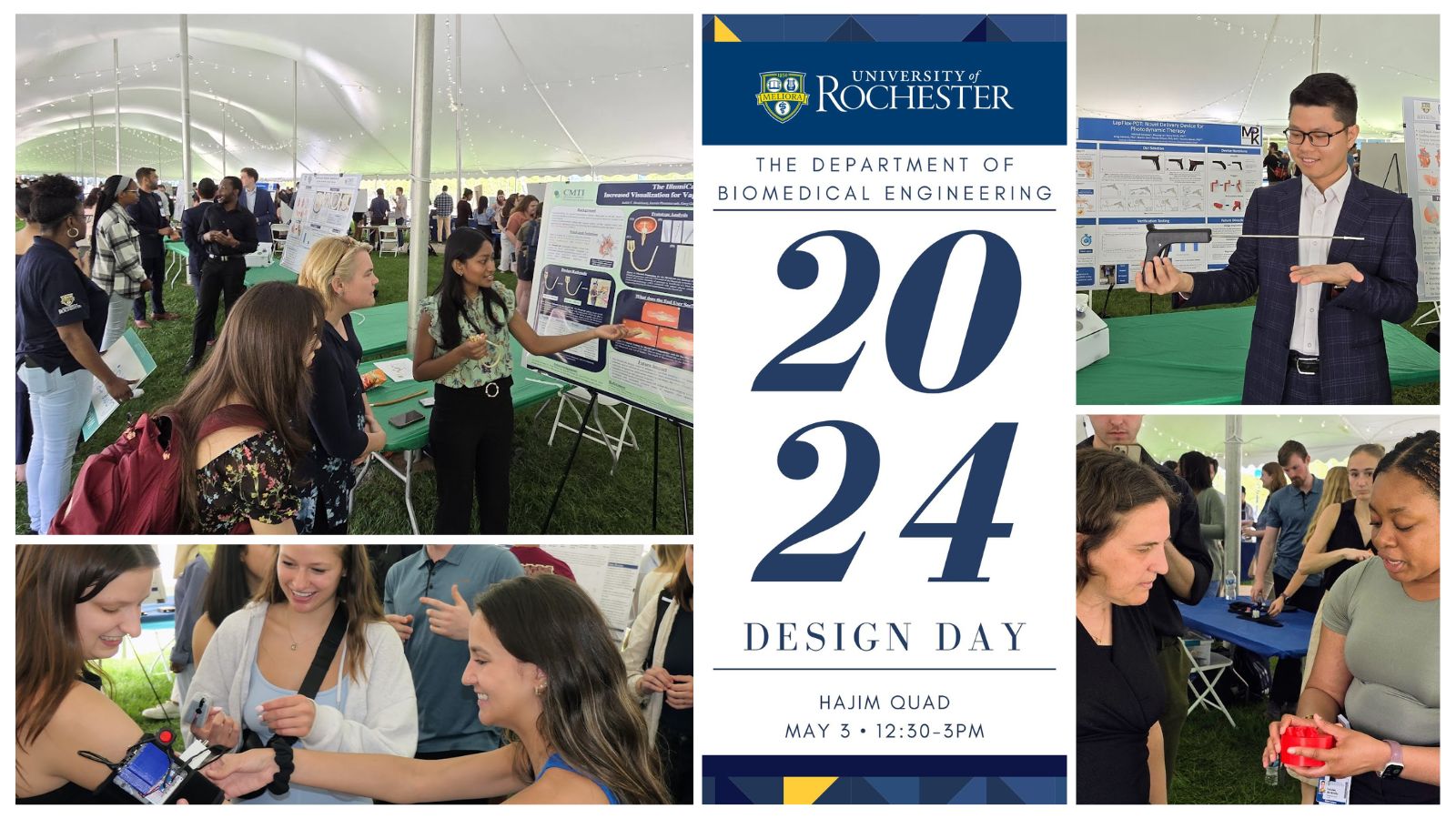BME Students Invent Tick Collection System For Researchers in Costa Rica


Days before they are set to present their final design to the University of Rochester community during Design Day, a team of senior biomedical engineering students (Sarah Manning, Rachelle Gomez-Guevara, Lawrence Chen and Anjali Patel) tinkers with a small radio-controlled car they have tricked out to handle rough terrain, travel long distances, and carry flannel flags.
For their senior design project, the team is creating a mobilized system to collect ticks in Costa Rica for further study by epidemiologists. Design capstones like this one are a culminating experience for students in the Hajim School of Engineering & Applied Sciences.
This year, 266 students are working on nearly 80 capstone projects, including 67 team projects and 12 individual theses. Clients who have presented the design capstone teams with problems have been providing input throughout the semester as the students work on solutions under the guidance of their faculty advisors.
In addition to providing hands-on opportunities to create something novel, the design projects offer opportunities for students to connect with potential employers, engage in global experiences, and conduct interdisciplinary research with collaborators from places like the University of Rochester Medical Center.
Collecting ticks in Costa Rica
The biomedical engineering team developed the tick collection system for Professor Timothy Dye, a medical anthropologist and social epidemiologist at the Medical Center, and Professor Adriana Troyo Rodríguez from the University of Costa Rica’s Center for Research in Tropical Diseases. The device is intended to overcome obstacles to studying tick-borne diseases.
“Currently there are very few tick collection solutions, and the most common one is flannel dragging,” says Rachelle Gomez-Guevara ’24.
“The issue is that the technique is very labor intensive. You can imagine having to spend a lot of time bending down, and you might catch one or two ticks if you’re lucky. Our technique is less laborious and hopefully it will be more effective.”
Thanks to funding from Dye, two of the students were able to travel to Costa Rica to field test their design. The trip gave the group helpful feedback about their design and taught them valuable lessons about the design process.
“The most important thing I have learned is testing is essential. The math looks pretty, but can be very different from reality,” says Gomez-Guevara.
“Costa Rica’s terrain is drastically different from Rochester’s, as you can imagine, and has a wide biodiversity. We went to different locations including a jungle and an area with tall grasses. Now we are modifying the device to better deal with the terrain we experienced.”

Source: UR Newscenter (Luke Auburn):
https://www.rochester.edu/newscenter/coursework-engineering-students-design-capstones-604682 Design Day
Design Day

